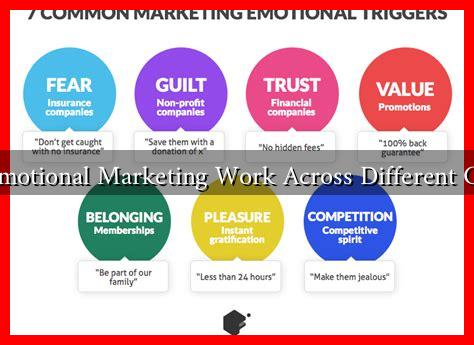-
Table of Contents
Does Emotional Marketing Work Across Different Cultures?
Emotional marketing has emerged as a powerful tool for brands seeking to connect with consumers on a deeper level. By tapping into feelings such as joy, sadness, fear, and nostalgia, marketers can create campaigns that resonate more profoundly than traditional advertising methods. However, the effectiveness of emotional marketing can vary significantly across different cultures. This article explores the nuances of emotional marketing in a multicultural context, examining whether it can transcend cultural boundaries and how brands can tailor their strategies accordingly.
The Power of Emotional Marketing
Emotional marketing leverages the psychological connection between consumers and brands. Research indicates that emotional responses can drive purchasing decisions more effectively than rational arguments. According to a study by the American Marketing Association, ads that evoke emotions can lead to a 23% increase in sales compared to those that do not. This highlights the potential of emotional marketing to create lasting impressions and foster brand loyalty.
Cultural Differences in Emotional Responses
While emotional marketing can be effective, the emotions that resonate with consumers can differ widely across cultures. Understanding these differences is crucial for brands aiming to implement successful emotional marketing strategies. Here are some key factors to consider:
- Individualism vs. Collectivism: In individualistic cultures (e.g., the United States), marketing messages that emphasize personal achievement and self-expression may be more effective. Conversely, collectivist cultures (e.g., Japan) may respond better to messages that highlight community, family, and social harmony.
- Emotional Expression: Cultures vary in their norms regarding emotional expression. For instance, Western cultures often encourage open emotional expression, while many Asian cultures may value restraint and subtlety. This can affect how emotional marketing messages are received.
- Symbolism and Context: Symbols and metaphors can carry different meanings across cultures. A campaign that uses a specific symbol to evoke nostalgia in one culture may not have the same effect in another. Understanding local contexts is essential for effective emotional marketing.
Case Studies: Successes and Failures
Several brands have successfully navigated cultural differences in emotional marketing, while others have stumbled. Here are a few notable examples:
- Coca-Cola: The “Share a Coke” campaign is a prime example of successful emotional marketing. By personalizing bottles with common names, Coca-Cola tapped into the joy of sharing and connection, resonating well in both individualistic and collectivist cultures.
- Procter & Gamble: The “Thank You, Mom” campaign during the Olympics showcased the emotional bond between mothers and their children. This campaign was well-received globally, as it tapped into universal themes of love and sacrifice, transcending cultural boundaries.
- Pepsi: In contrast, Pepsi’s 2017 ad featuring Kendall Jenner faced backlash for trivializing social justice movements. The ad was criticized for its insensitivity, highlighting the importance of understanding cultural contexts and emotional triggers.
Strategies for Effective Emotional Marketing Across Cultures
To ensure that emotional marketing resonates across different cultures, brands should consider the following strategies:
- Conduct Cultural Research: Invest in understanding the cultural nuances of target markets. This includes studying local customs, values, and emotional triggers.
- Localize Content: Tailor marketing messages to reflect local languages, symbols, and emotional contexts. Localization goes beyond translation; it involves adapting the message to fit cultural norms.
- Test and Iterate: Use A/B testing to gauge the effectiveness of emotional marketing campaigns in different cultural contexts. Gather feedback and be willing to adapt strategies based on consumer responses.
Conclusion
Emotional marketing has the potential to create powerful connections between brands and consumers, but its effectiveness is not universal. Cultural differences play a significant role in shaping emotional responses, and brands must navigate these complexities to succeed in diverse markets. By understanding cultural nuances, localizing content, and testing strategies, marketers can harness the power of emotional marketing to resonate with consumers across the globe. As the world becomes increasingly interconnected, the ability to adapt emotional marketing strategies to different cultures will be a key differentiator for brands seeking to thrive in a competitive landscape.

